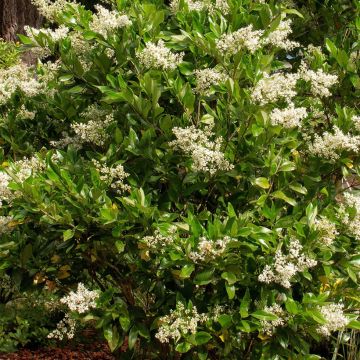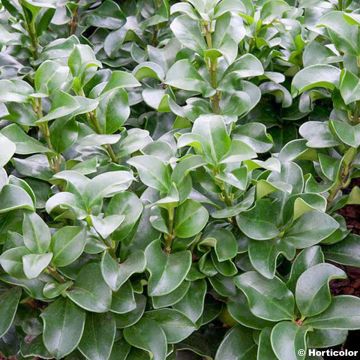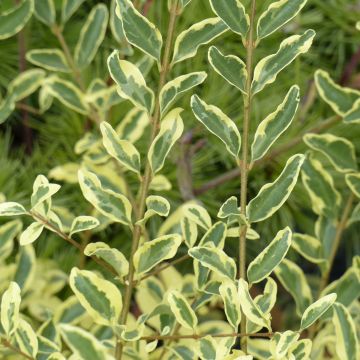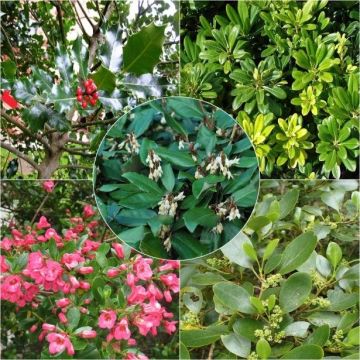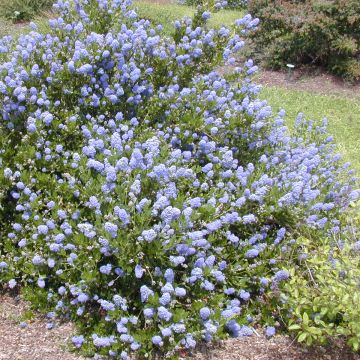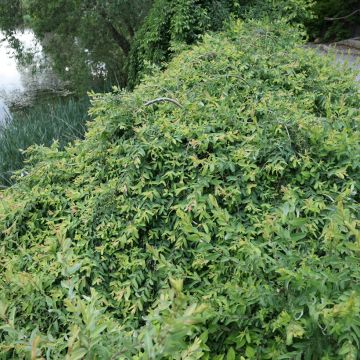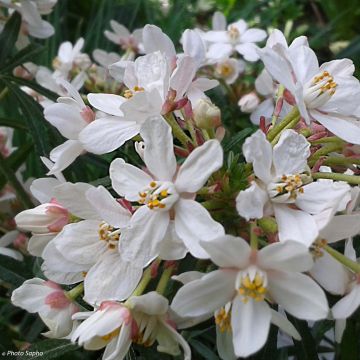

Golden Privet - Ligustrum vicaryi


Golden Privet - Ligustrum vicaryi
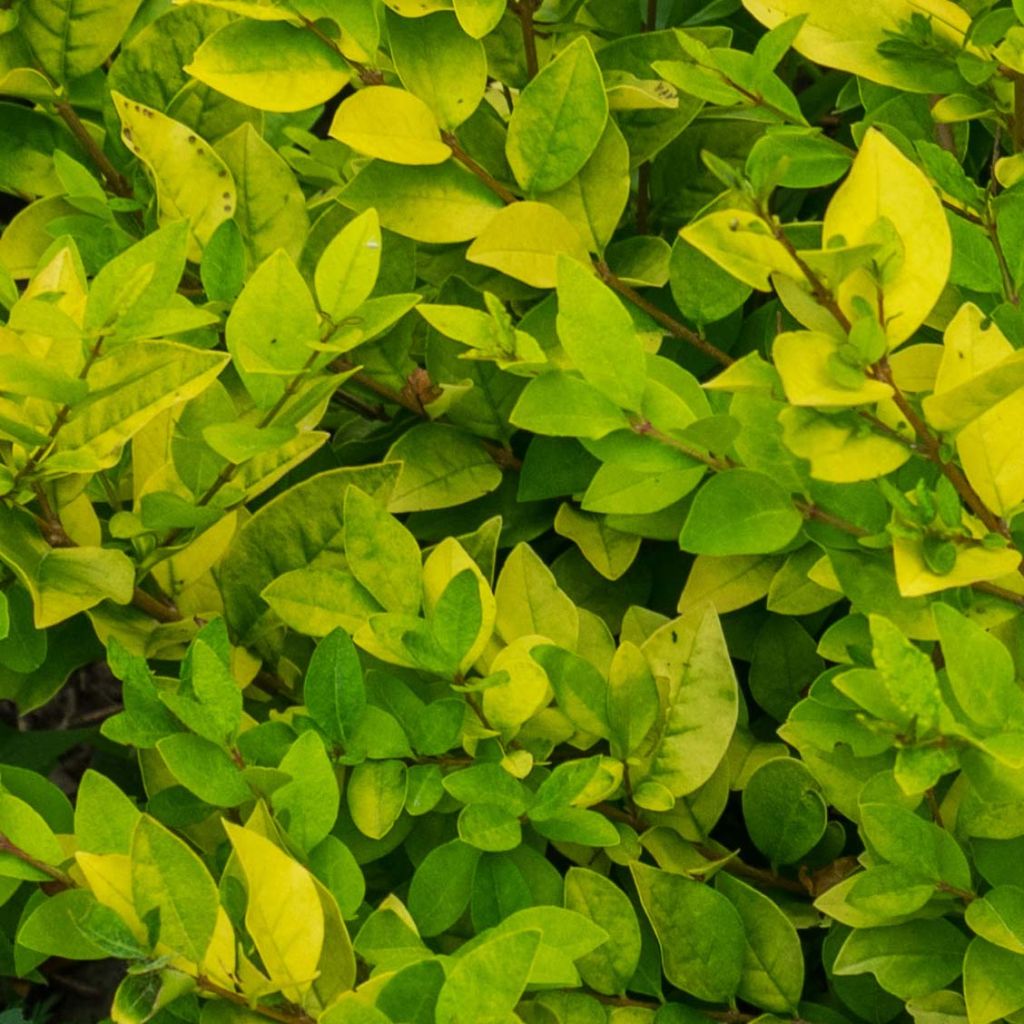

Golden Privet - Ligustrum vicaryi


Golden Privet - Ligustrum vicaryi
Golden Privet - Ligustrum vicaryi
Ligustrum x vicaryi
Privet
Before dispatch, I received a quick phone call from Promise of Flowers, a ray of sunshine on my rainy day! The specific research area arrived quickly, fresh and vibrant, in efficient packaging.
Paul, 12/10/2021
This item cannot be shipped to the selected country
Delivery charge from €5.90
Delivery charge from €5.90
Delivery to Corse prohibited
More information
Schedule delivery date,
and select date in basket
This plant carries a 24 months recovery warranty
More information
We guarantee the quality of our plants for a full growing cycle, and will replace at our expense any plant that fails to recover under normal climatic and planting conditions.
From €5.90 for pickup delivery and €6.90 for home delivery
Express home delivery from €8.90.
From €5.90 for pickup delivery and €6.90 for home delivery
Express home delivery from €8.90.
Delivery to Corse prohibited: UE law prohibits the import of this plant from mainland France to Corse as part of the fight against Xylella fastidiosa. Please accept our sincere apologies.
More information

Does this plant fit my garden?
Set up your Plantfit profile →
Description
The Ligustrum (x) vicaryi is a variety of golden privet that is easy to cultivate and grows quickly, perfect for quickly creating a screen that is both ornamental due to the brightness of its golden foliage in spring, pleasantly scented with white flowers in summer, and adorned with beautiful black berries late in the season. This semi-evergreen bush tolerates pruning very well and adapts well to container cultivation, making it also very useful for getting greenery onto terraces and large balconies.
The Ligustrum (x) vicaryi is a horticultural hybrid resulting from the cross-breeding between the Ligustrum ovalifolium Aureum, native to Japan and Korea, and the L. vulgare, the common privet native to Europe. All these plants belong to the olive family, just like lilacs and forsythias. It is a medium-sized bush with a bushy habit as well as upright and very vigorous stems that can be kept compact by regular pruning. Growing rapidly, the golden privet measures about 2 m (6.6 ft) in height and 1.75 m in width. Its foliage, usually semi-evergreen, consists of glossy, narrow and ovate, lanceolate leaves, yellow-golden in spring, measuring between 3 and 7 cm (2.8 in) in length and appearing very early in the season. In summer, the foliage takes on a bright light green color. In June-July, small, very fragrant and nectar-rich creamy white flowers appear in panicles measuring 5 to 10 cm (3.9 in). In autumn these give way to small spherical black berries, which remain for part of the winter. The leaves, flowers, and fruits of the privet are toxic to humans and animals if ingested.
Ornamental due to its foliage, compact and bushy habit, the Golden Privet can be planted in multiple ways:
- For the creation of hedges and screens, due to the density of its luminous foliage, its medium size, its hardiness, its very dense branching, and its high tolerance for repeated pruning. It is easy to shape it as desired, making it perfectly suitable for the art of bonsai. It is also well-suited for topiary pruning (in ball or other shapes), or even trained as a standard or half-standard and cultivated in a pot. Finally, it will have a beautiful effect when associated with other pruned bushes, playing with the form and colour of the foliage to create a minimalist, graphic effect. It also lends itself very well to planting in groups, mass planting, borders, rock gardens, specimen planting, or wild hedges.
- It can be grown in alongside other shrubs (Photinia, Eleagnus, St. John's Wort, Kerria japonica, whitebeam) and perennial plants (daylily, Verbena bonariensis, tree lupin) by leaving it to grow naturally, creating a beautiful flowering informal hedge and taking advantage of its lovely foliage and pretty flowers. It is possible that the roots of the privet may be harmful to certain perennial plants planted at its base so as a precaution, leave a sufficient planting distance around the base.
Properties:
With its highly fragrant flowers that contain a lot of pollen, making it very nectar-rich, this privet contributes to the protection of the bee population. Its pollen can be allergenic for certain individuals who are sensitive to it. It has a very high resistance to pollution.
Report an error about the product description
Golden Privet - Ligustrum vicaryi in pictures




Plant habit
Flowering
Foliage
Botanical data
Ligustrum
x vicaryi
Oleaceae
Privet
Cultivar or hybrid
Other Ligustrum - Privet
Planting and care
Very undemanding, the Ligustrum (x) vicaryi is thrives in any ordinary garden soil (even chalky) that is well-drained but not too dry and in a sunny position (for better golden colouring of the foliage), or semi-shaded. Very hardy, it can withstand temperatures down to -15°C (5°F) and less. When planting in autumn or spring, prune the young plant to 30 or 40 cm (11.8 or 15.75 in) from the ground to obtain a dense branching. For hedges, a spacing of 0.60 cm (0.23 in) between each bush is necessary. For trimmed hedges or topiary, pruning is necessary twice a year: at the end of winter (February-March) and at the end of summer (August-September) by slightly trimming back the branches to allow the bush to branch well. It is worth noting that privet does not flower, or very little, if it is pruned. For specimen shrubs, pruning is done in spring and involves removing dead wood to maintain a beautiful shape. Possible diseases and parasites: aphids, thrips, powdery mildew.
Planting period
Intended location
Care
-
, onOrder confirmed
Reply from on Promesse de fleurs
Hedge shrubs
Haven't found what you were looking for?
Hardiness is the lowest winter temperature a plant can endure without suffering serious damage or even dying. However, hardiness is affected by location (a sheltered area, such as a patio), protection (winter cover) and soil type (hardiness is improved by well-drained soil).

Photo Sharing Terms & Conditions
In order to encourage gardeners to interact and share their experiences, Promesse de fleurs offers various media enabling content to be uploaded onto its Site - in particular via the ‘Photo sharing’ module.
The User agrees to refrain from:
- Posting any content that is illegal, prejudicial, insulting, racist, inciteful to hatred, revisionist, contrary to public decency, that infringes on privacy or on the privacy rights of third parties, in particular the publicity rights of persons and goods, intellectual property rights, or the right to privacy.
- Submitting content on behalf of a third party;
- Impersonate the identity of a third party and/or publish any personal information about a third party;
In general, the User undertakes to refrain from any unethical behaviour.
All Content (in particular text, comments, files, images, photos, videos, creative works, etc.), which may be subject to property or intellectual property rights, image or other private rights, shall remain the property of the User, subject to the limited rights granted by the terms of the licence granted by Promesse de fleurs as stated below. Users are at liberty to publish or not to publish such Content on the Site, notably via the ‘Photo Sharing’ facility, and accept that this Content shall be made public and freely accessible, notably on the Internet.
Users further acknowledge, undertake to have ,and guarantee that they hold all necessary rights and permissions to publish such material on the Site, in particular with regard to the legislation in force pertaining to any privacy, property, intellectual property, image, or contractual rights, or rights of any other nature. By publishing such Content on the Site, Users acknowledge accepting full liability as publishers of the Content within the meaning of the law, and grant Promesse de fleurs, free of charge, an inclusive, worldwide licence for the said Content for the entire duration of its publication, including all reproduction, representation, up/downloading, displaying, performing, transmission, and storage rights.
Users also grant permission for their name to be linked to the Content and accept that this link may not always be made available.
By engaging in posting material, Users consent to their Content becoming automatically accessible on the Internet, in particular on other sites and/or blogs and/or web pages of the Promesse de fleurs site, including in particular social pages and the Promesse de fleurs catalogue.
Users may secure the removal of entrusted content free of charge by issuing a simple request via our contact form.
The flowering period indicated on our website applies to countries and regions located in USDA zone 8 (France, the United Kingdom, Ireland, the Netherlands, etc.)
It will vary according to where you live:
- In zones 9 to 10 (Italy, Spain, Greece, etc.), flowering will occur about 2 to 4 weeks earlier.
- In zones 6 to 7 (Germany, Poland, Slovenia, and lower mountainous regions), flowering will be delayed by 2 to 3 weeks.
- In zone 5 (Central Europe, Scandinavia), blooming will be delayed by 3 to 5 weeks.
In temperate climates, pruning of spring-flowering shrubs (forsythia, spireas, etc.) should be done just after flowering.
Pruning of summer-flowering shrubs (Indian Lilac, Perovskia, etc.) can be done in winter or spring.
In cold regions as well as with frost-sensitive plants, avoid pruning too early when severe frosts may still occur.
The planting period indicated on our website applies to countries and regions located in USDA zone 8 (France, United Kingdom, Ireland, Netherlands).
It will vary according to where you live:
- In Mediterranean zones (Marseille, Madrid, Milan, etc.), autumn and winter are the best planting periods.
- In continental zones (Strasbourg, Munich, Vienna, etc.), delay planting by 2 to 3 weeks in spring and bring it forward by 2 to 4 weeks in autumn.
- In mountainous regions (the Alps, Pyrenees, Carpathians, etc.), it is best to plant in late spring (May-June) or late summer (August-September).
The harvesting period indicated on our website applies to countries and regions in USDA zone 8 (France, England, Ireland, the Netherlands).
In colder areas (Scandinavia, Poland, Austria...) fruit and vegetable harvests are likely to be delayed by 3-4 weeks.
In warmer areas (Italy, Spain, Greece, etc.), harvesting will probably take place earlier, depending on weather conditions.
The sowing periods indicated on our website apply to countries and regions within USDA Zone 8 (France, UK, Ireland, Netherlands).
In colder areas (Scandinavia, Poland, Austria...), delay any outdoor sowing by 3-4 weeks, or sow under glass.
In warmer climes (Italy, Spain, Greece, etc.), bring outdoor sowing forward by a few weeks.





































